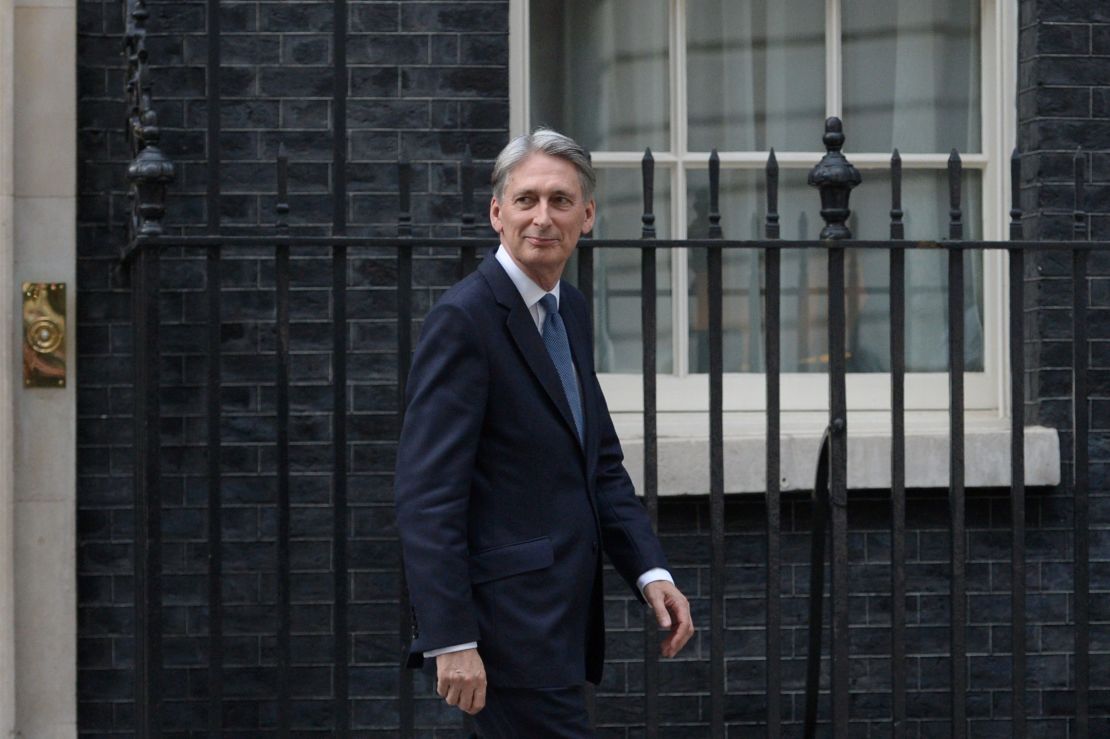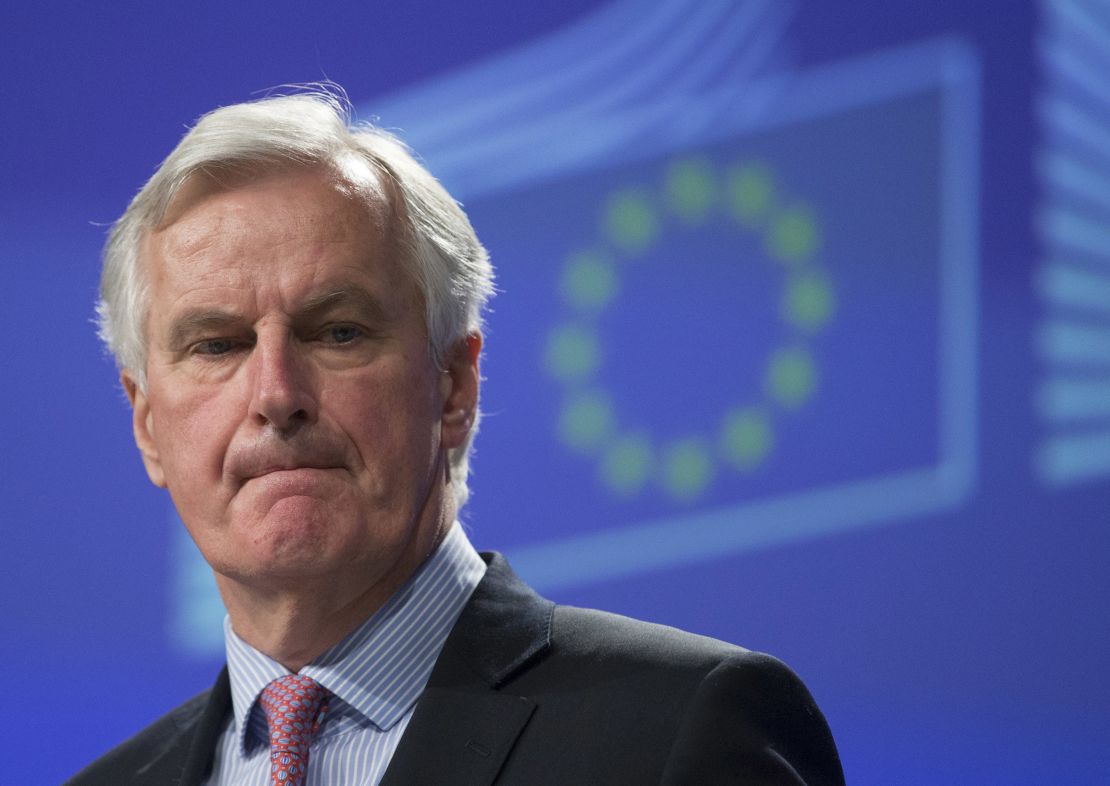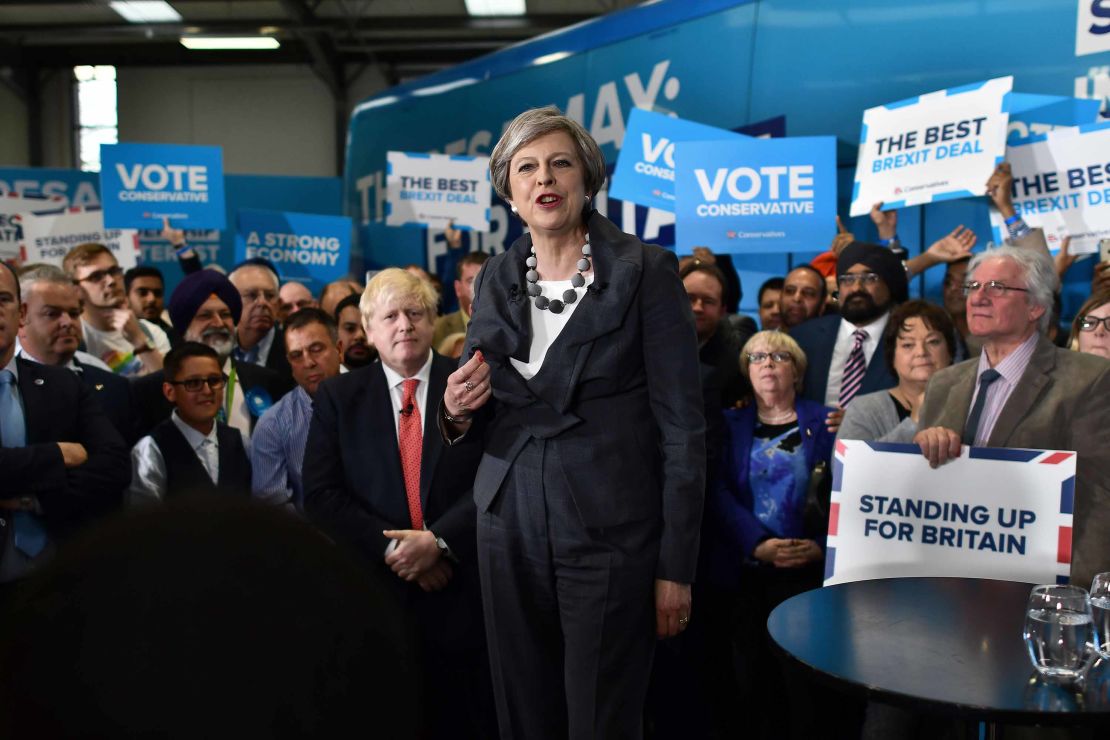Story highlights
Policy differences have split the UK Cabinet
Divergent views blur negotiating position
May weakened after election losses
After the most turbulent year of her political life, British Prime Minister Theresa May is currently enjoying the fresh air and tranquility of the Swiss mountains. May interrupted her three-week walking vacation only to participate in the commemorations of the 100th anniversary of the Battle of Passchendaele earlier this week. While Downing Street insists she remains in charge of the country even from her Swiss chalet, her absence from the political fray has allowed a very public row to escalate within her Cabinet over Brexit.
Chancellor Philip Hammond, perhaps taking advantage of the power vacuum, called for a transition period for Britain’s immigration rules after the country formally leaves the European Union in March 2019, to allow businesses and workers some time to adjust to an end to EU rules on free movement of citizens.
Hammond, who campaigned against Brexit in the 2016 referendum, told business leaders (and the BBC in a subsequent interview) that EU citizens would still be able to come to the UK after Brexit. “Many things would look similar” the day after Britain left the EU, he said.

In May’s absence, Hammond has built up support for his position from fellow ministers who fear that a “cliff edge” drop in skilled labor from the EU will damage the British economy.
That has infuriated two leading proponents of Brexit, Foreign Secretary Boris Johnson and International Trade Secretary Liam Fox. They insisted this week that freedom of movement must end on March 29, 2019, the date when Britain formally leaves the EU. In an attempt to defuse the spat, May’s spokesman insisted that free movement will end in March 2019.
But the issue may be one of semantics: certainly the door to a transition deal remains firmly open. Former Conservative leader William Hague wrote in the Daily Telegraph on Tuesday that Hammond’s plan would save the UK from “disaster” and that he deserved “great credit” for putting it forward.
British Cabinet ministers have always taken different positions on Europe – the issue has been a faultline for the Conservative Party for decades. Since the referendum, those differences were acknowledged but the Prime Minister managed to unite both sides while she was at her most powerful, in the months after taking office amid the wreckage of the Brexit referendum last year.
She was able to set the terms for Brexit – as she did in her Lancaster House speech in January, when she made clear Britain would make a clean break with the EU. Yet the “snap” general election this year changed everything: losing her overall Commons majority has left May in a weak position, with no authority to impose Cabinet discipline.
UK’s Brexit position still unclear
The Cabinet infighting over immigration means that, five months after May triggered Article 50, marking the start of the two-year Brexit process, Britain’s position on the most important issue facing the country is unclear. If the Cabinet – which is supposed to adhere to rules on collective responsibility – cannot unite around a common position, how is the British government supposed to present one to Brussels and negotiate its way out of the EU?

It’s not as if the negotiations have gone well so far. There have been two rounds of talks since the election in June, with Brexit Secretary David Davis and the EU’s senior negotiator Michel Barnier failing to make a breakthrough on the “divorce settlement”, the cost to the UK of leaving the EU, which must be agreed before talks can start on any other issue. Barnier has insisted that Britain must clarify its position on the financial settlement by the time the third round of talks starts at the end of August.
The next phase of the talks, which will tackle a future free trade deal between Britain and Europe and take in the thorny issue of freedom of movement, is due to begin in just over eight weeks. The public fighting among British ministers will be lapped up by EU negotiators, who will know they can go into that round of talks from a position of strength against a divided team.
May’s rivals circling
The Cabinet turmoil is unlikely to relent. None of the ministers involved are showing signs of backing down. Hammond has spent the weeks since the election making public interventions on Brexit and is known to harbor ambitions to succeed May as leader of their party.

Likewise, Foreign Secretary Johnson would almost certainly make a leadership bid if May resigned or was ousted – not an unlikely scenario given the Prime Minister’s current weak position. Her three most recent predecessors as Conservative prime ministers were all brought down over Europe, and the longer the disarray over the UK’s position continues, the more likely it is she will be the fourth.
Given the Cabinet infighting and doubts over her own authority, it is perhaps surprising that the Prime Minister has taken such a long vacation – although no doubt she needed one after her election calamity.
While in Switzerland, she could have the opportunity to examine that country’s own arrangements with the EU, which allow for enhanced access to the European single market but flexibility on freedom of movement that still gives local people priority over jobs, all while remaining outside the bloc. It is a deal that would no doubt have the backing of many in her Cabinet, if only she had the authority to impose it.




